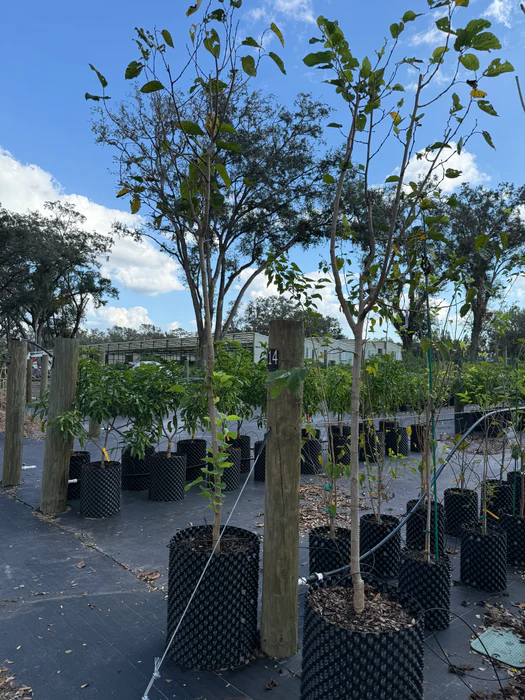
Mulberry Black
Black Mulberry Tree: Growing Guide and Care
Taste:
The Black Mulberry (Morus nigra) produces luscious, dark purple-black fruits that are cherished for their rich, sweet, and slightly tangy flavor. The berries are juicy and have a robust, wine-like depth, making them perfect for fresh eating, smoothies, jams, syrups, and desserts. Their intense flavor profile is often described as a blend of blackberry and red wine, with a hint of tartness that balances the sweetness.
Best Growing Environment:
Black Mulberry trees thrive in warm temperate to subtropical climates. They prefer well-drained, fertile soils rich in organic matter but are adaptable to a variety of soil types, including loamy, sandy, or clay soils, as long as there is good drainage. They tolerate periods of drought but perform best with consistent moisture. These trees grow best in areas with hot summers and mild winters.
Common Names:
- Black Mulberry
- Persian Mulberry
- Shahtoot
Average Height and Growth Rate:
Black Mulberry trees typically reach a height of 20 to 30 feet and can spread just as wide. With regular pruning, they can be maintained at 10 to 15 feet for easier harvesting. The growth rate is moderate, with an annual increase of 1 to 2 feet, depending on conditions.
Sun Requirements:
Full sun is essential for the best fruit production, requiring at least 6 to 8 hours of direct sunlight daily. The tree can tolerate partial shade but may yield fewer fruits.
Cold Hardiness:
Black Mulberries are moderately cold-hardy, tolerating temperatures down to 20°F (-6°C). Prolonged exposure to freezing temperatures can damage the tree, so they are best suited for USDA Zones 7-10.
Water Requirements:
These trees require regular watering during the growing season, especially in hot or dry climates. While established trees are somewhat drought-tolerant, consistent moisture promotes better fruiting. Deep watering every 10-14 days is recommended, increasing frequency during dry spells.
Planting Guide
- Site Selection: Choose a sunny, sheltered location with well-draining soil. Avoid low-lying areas prone to waterlogging.
- Soil Preparation: Amend the soil with compost or aged manure to improve fertility and drainage.
- Planting Time: Plant in spring or fall to allow the tree to establish roots before extreme temperatures.
- Spacing: Space trees at least 15 to 20 feet apart to accommodate their mature size.
- Planting: Dig a hole twice as wide as the root ball and of equal depth. Place the tree in the hole, backfill with soil, and water thoroughly to eliminate air pockets.
Fertilizing Guide
- Early Spring (March): Apply a balanced fertilizer, such as 10-10-10, to support leaf and root development as the tree emerges from dormancy.
- Late Spring (May): Reapply the balanced fertilizer to encourage healthy growth during the active growing season.
- Summer (July): Use a low-nitrogen fertilizer (e.g., 5-10-10) to promote fruit development and reduce excessive vegetative growth.
Application Tips: Spread the fertilizer evenly around the tree’s drip line, avoiding direct contact with the trunk. Water the area well after each application to help the nutrients absorb into the soil.
USDA Zone:
The Black Mulberry tree is suitable for USDA Zones 7-10. It requires protection from frost in the colder parts of its range and thrives in regions with warm summers and mild winters.

